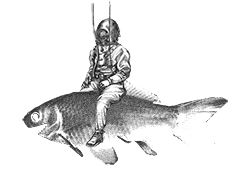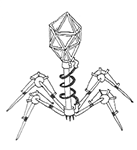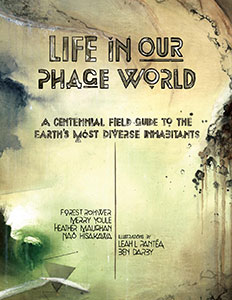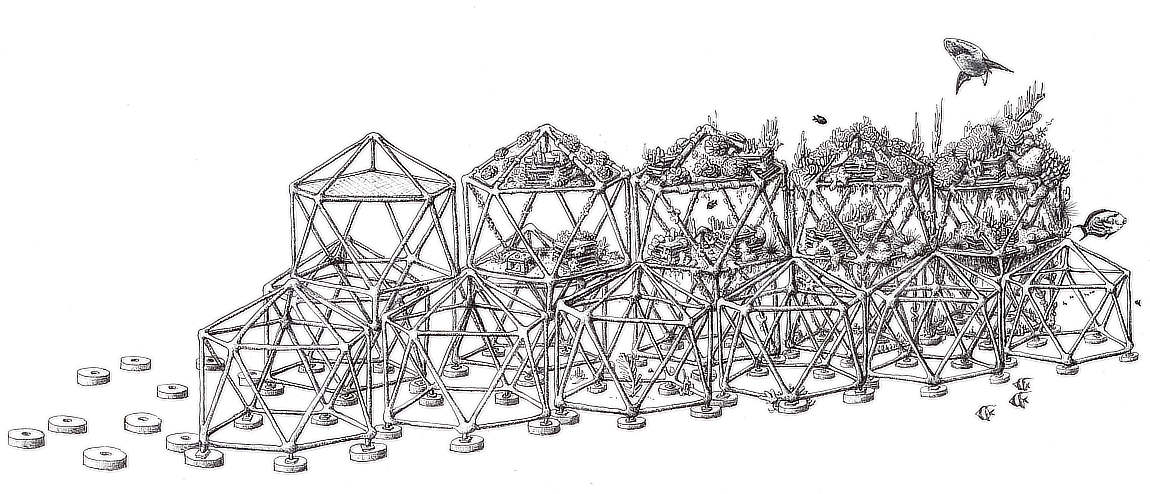Principal Investigator
 Dr. Rohwer is a viral ecologist. He pioneered the field of viromics and showed that viruses are the most biodiverse life forms in the world. Combined with other "-omics" methods the Rohwer lab studies the roles of viruses and microorganisms in the health and disease of ecosystems. The lab's main study systems are coral reefs and human lungs.
Dr. Rohwer is a viral ecologist. He pioneered the field of viromics and showed that viruses are the most biodiverse life forms in the world. Combined with other "-omics" methods the Rohwer lab studies the roles of viruses and microorganisms in the health and disease of ecosystems. The lab's main study systems are coral reefs and human lungs.
The Lab
- Lab Members
We have a diverse group of researchers in the lab that include undergraduate volunteers, graduate students (MS & PhD), post-docs, and visiting scientists.
- Join the Lab
Our lab offers research and training opportunities for students (undergraduate, MS, PhD), postdocs, and scientists.
- Lab Training & Methods
Learn how to build the tools that we use to explore diverse ecosystems.
-
Related Websites
-
Media Galleries

Research
 Coral Research
Coral Research
Coral reefs worldwide are in decline. The dramatic rise in incidences of coral disease over the last two decades has been instrumental in this process. We have hypothesized that most of these diseases are actually opportunistic infections instigated by anthropogenic stressors. Our research is focused around understanding the interactions between the microbial world and coral reefs, and how these systems change following perturbation. Human Research
Human Research
We are currently investigating the dynamics of bacteria, phage, and eukaryotic viruses in the respiratory tracts of individuals with and without Cystic Fibrosis. Characterization of viral communities coupled with microbial transcriptomics and viral metagenomics will allow a better understanding of how the unique environment of the CF airway drives microbial and viral specialization and vice versa. Phage Outreach Program
Phage Outreach Program
Our mission is to interest high school students in the study of the Phage Virus and attract them to the field of science in the future. We will do this by sharing the most interesting aspects about the phage virus along with an educational foundation, a fun art contest, and an in-depth field trip. Additionally, 3-5 motivated students will be offered a summer internship at our lab researching the Phage Virus.
Books
 Life in Our Phage World
Life in Our Phage World
To celebrate a century of phage exploration, we invite you to get intimate with 30 diverse phages in this premier phage field guide. In these 404 pages you'll learn who these phages are, where on Earth they've been found, who their close relatives are, how their genomes are structured, and how they trick their hosts into submission. Researchers who have devoted their lives to phage also recount their experiences in pursuit of their quarry.The book is available in electronic (PDF) format for free. It can be downloaded as a high-resolution (323 Mb) or lower resolution (75 Mb) file. For optimal viewing, display the pages with the two-page view that includes the cover.
Electronic Book DownloadsSampler (3 Mb)
Hardcover Book Purchases
Low-resolution (75 Mb)
High-resolution (323 Mb) Coral Reefs in the Microbial Seas
Coral Reefs in the Microbial Seas
For millennia, coral reefs have flourished as not only one of the planet's most magnificent ecosystems, but also as its most biodiverse. However, since the 1980s the corals have been struggling. Both coral bleaching and disease have spread globally. During recent research expeditions to the remote Line Islands, microbial ecologist Forest Rohwer and his colleagues found that the large-scale changes to the reefs in recent decades are the work of the microbes as they respond to various human impacts.Coral Reefs in the Microbial Seas is the first book to recount this story, complete with introductions to the coral reef ecosystem, 21st century metagenomic research tools, and the coral's microbial and viral partners. An engaging book, its science is liberally spiced with artistic illustrations and playful stories from the research expeditions.
Book Downloads
P.H.A.G.E.S.
by Forest Rohwer & Breeann Kirby
P.H.A.G.E.S. was originally proposed as a popular science book tenatively titled The Predators Within (TPW). TPW was to focus on phage and the human microbiome. As Breeann, Leah Pantea (illustrations), and I worked on TPW, it bacame clear that the science was still too nascent for a true synthesis. I decided that the best way forward, much to Breeann’s chagrin, was to create a synthesis of microbial ecology that would be the basis for TPW. P.H.A.G.E.S. is the result.Breeann and Leah are currently finishing the TPW.
P.H.A.G.E.S. and the Goldilocks Line are my personal way of thinking about ecosystems. This approach has served me well and hopefully will help other readers. Aspiring biologists, as well as interested non-specialists, may find P.H.A.G.E.S. useful for understanding the fascinating complexity of nature. The target audiences for P.H.A.G.E.S. are my lab members and immediate colleagues who range from undergraduates to full professors in science, math, and engineering. The goal is to get this disparate group using the same framework for studying ecosystems with particular emphasis on how viruses are dominant players. My hope is to turn the mostly qualitative P.H.A.G.E.S. into a quantitative science. This will probably take another 20 years and P.H.A.G.E.S. will continually update.
Lab News & Events
Three-Dimensional Molecular Cartography of the Caribbean Reef-Building Coral Orbicella faveolata
Apr 08, 2021|
Dr. Ty Roach and Dr. Forest Rohwer sample the coral colony, Orbicella faveolata. Photo credit: Dr. Ben Mueller. |
Congratulations to Ph.D. candidate Mark Little, former lab member Emma George, other members of the Rohwer Lab, and collaborators from other institutions for their recent publication, Three-Dimensional Molecular Cartography of the Caribbean Reef-Building Coral Orbicella faveolata, which was published in “Frontiers in Marine Science.” For this project, they looked at the holobiont (corals and their microbiome) of coral colonies on the southern Caribbean island Curacao. Using pictures and data taken from sampling sites, they constructed three-dimensional models of the colonies, specifically O. faveolata, to look closely at the microbial diversity, microbial gene expression, and biochemistry. The models allowed them to map the microbial diversity and metabolites onto the colonies and other interacting organisms, such as, algae and competing corals. To do this, they used four unique “-omics” techniques coupled with spatial reconstruction.
The goal of this study was to investigate the ecological and spatial drivers of the sampled Coral colonies. They linked microbial and viral functions to specific bacterial groups that are key parts of the coral microbiome. Looking at the connections between viruses, microbes, and metabolites across a single coral colony helps contribute to an understanding of the interactions between these organisms and their systems. Corals are vulnerable to diseases that stem from changes in the healthy microbiome, thus knowing the roles of microbes and viruses in healthy coral systems is imperative to identifying the causes of coral disease.
Mark Little, Emma George, and their co-researchers hope to use the approaches of this study to address spatial patterns of coral holobionts at the whole reef level or at larger scales, such as, island chains or ocean basins. They would also like to study what other factors affect the functions of microbes and viruses within the coral community.
To read the full study, please click the link below.
This Week in Virology (TWiV)
Mar 24, 2021Check out This Week in Virology (TWiV) to hear Dr. Rohwer and Ph.D. candidate Maria-Isabel Rojas discuss the #swab4corona project. For this, they get help from citizen scientists sampling their urban environment, and analyze the samples for SARSCoV2 and other RNA viruses. They have found that RNA from SarsCoV2 was rare on surfaces and the probability of fomites transmission was low. To hear more about their methods and results, listen to this episode.


